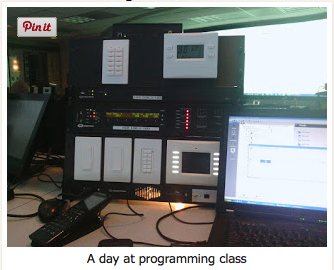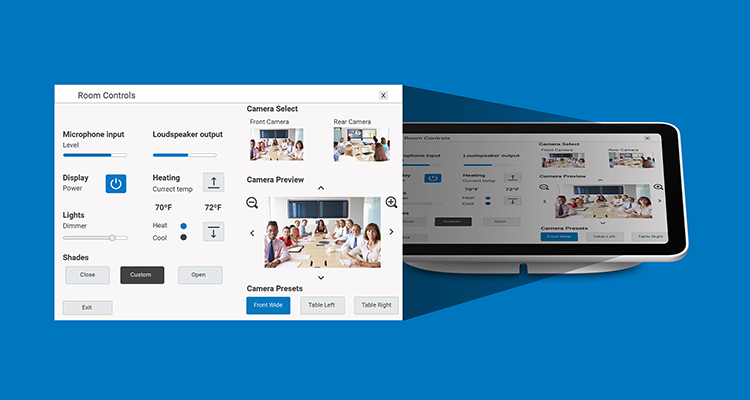AV Control, Automation, and Expectations in a Consumer-Driven World
Control and automation can be the most fun part of AV design — from the blank canvas of a user interface, one can create anything. Preview windows? Live tiles? A photo of the room which reacts as conditions change? Imagination is the limit, but there are many pitfalls. Today we’ll talk about why some users fear control systems and why some manufacturers fear their own potential resellers.
There’s no question that the control interface is a major component in determining user experience; if controls are too simple, users will feel that the system is limited in capability. Too complex and it will be overwhelming and difficult to use. Poorly laid out controls make the experience uncomfortable and unpleasant, if not confusing. How do people outside the industry see this aspect of AV design? I see a few trends.
To the User, the System IS the Program
This is an obvious point, and one on which we need to educate the public. I discussed the possibility of control systems with a family member when he was moving. He initially considered the idea but, after speaking to some of his friends, decided against it. One of the biggest factors was the number of people who said that they didn’t like the system interface, that it was confusing to use or not flexible enough. This was a fully programmable system in which the interface would be whatever the programmer created. It’s a bit like saying that you don’t like your computer because the menu structure on your spreadsheet program is difficult to use. But it didn’t matter: the association had been made that Brand X (I’ll not name them here) = bad experience. While not the only factor, this was one factor in his decision to not get a control system.
This came to mind yesterday during a Twitter discussion about how a certain manufacturer doesn’t always make it easy for smaller AV contractors to buy their control products. From the contractor’s point of view, I see this as not only frustrating, but as pushing them away from a brand which they’d otherwise be interested in supporting. Looking at the above discussion with the public, it makes perfect sense. If you let one poorly trained individual muddle through control system programming, their sloppy work creates the impression that your hardware is not very good.
Configurable, rather than programmable, systems mitigate this a bit; a configurable system allows the manufacturer to carefully craft an interface which will fit the majority of simple configurations. This is, perhaps, a greater part of the configurable systems’ value than the significant savings on programming labor. It is a way in which a manufacturer can control the experience while still allowing wide access to their devices.
Consumerization Creates Familiarity — For Good and Ill
Not too many years ago, the initial part of training for an integrated AV system in a corporate environment dealt with convincing users that they don’t need the “TV remote” and that they should control everything via the nice custom GUI on the touch panel. Today most of us have touch panels in our pockets, and many of us have the ability to control something in the outside world with them. This means that a touch panel is no longer foreign, but also that it’s no longer special. An eye opening moment came when I was discussing device layout in the final stages of construction for a new fairly high-technology facility. One of the users pointed at a table and said, “We don’t want the iPad there. The people at that position only need a microphone.”
The “iPad” in this context was a desktop-mounted touch panel, complete with the control manufacturer’s logo. It was over a thousand dollars in hardware with countless hours of custom programming and GUI design. It didn’t matter. To the user it was a ten-inch touch panel; the same thing they use to watch Netflix. Turning on the big video wall with the touch panel is no more special than streaming a YouTube video to the TV in your living room.
 We’re Being Spoiled by Off the Shelf Tools
We’re Being Spoiled by Off the Shelf Tools
A few years ago I took introductory Crestron training and learned, amongst other things, how to build a rudimentary control GUI. One class exercise was creating a transport control page for a DVD player. We had to draw buttons, map them the appropriate commands, and set up feedback to buttons remained in the engaged state if appropriate. It took some time and some knowledge. This past year, as some of you know, I moved. We unpacked the DVD player long before we unpacked its handheld remote — a remote which I’m still not certain I found. This was no problem; in just a few minutes I was able to download a free remote app on my phone which just so happens to have an IR emitter. I can now use my phone as a remote for anything I own.
Automation and No-Touch Control Will Become Expected
“Wow moments” are becoming few and far between. During an excellent webinar on modern control system design, Sumanth Rayancha of Pepperdash listed “no-touch” fully automated control as one future trend. An example was the “smart meeting room.” Once a meeting is booked, everything becomes automatic. Lights come on to the appropriate level when the presenter enters, the correct technology activates itself, complete with display of a presentation. An email or text message can even be sent to the food service team to deliver lunch. It’s am amazing growth in the potential of control and automation.
This is amazing, but still well within reach of consumers; just this morning my wife was lamenting that if she forgets to turn off phone notifications on her phone before bedtime she’ll often get woken up by something or other; I pointed out that it is now fairly easy to use a web-service such as If This Then That to automatically silence and un-silence your phone at certain times of day. One can also turn on the porch light, off the hall light, etc. As more people come aware of these things, they will become more expected.
Not many years ago there was a bit of a “wow” moment when you hit the “Video Conference” button on a touch panel and the shades closed, lights adjusted themselves, cameras swung into position, and displays lit up. That is quickly becoming just as familiar as the “iPad” on the table.
What does this mean? It means that the expectations have never been higher. It’s not enough anymore to have control or even automation — we need to have it and present it in a manner which is thoughtful, pleasant to use, and fills all of the users’ needs. Otherwise we’re back to users seeing AV systems — and hardware — as “terrible” because someone didn’t make it do what they expected of it.





